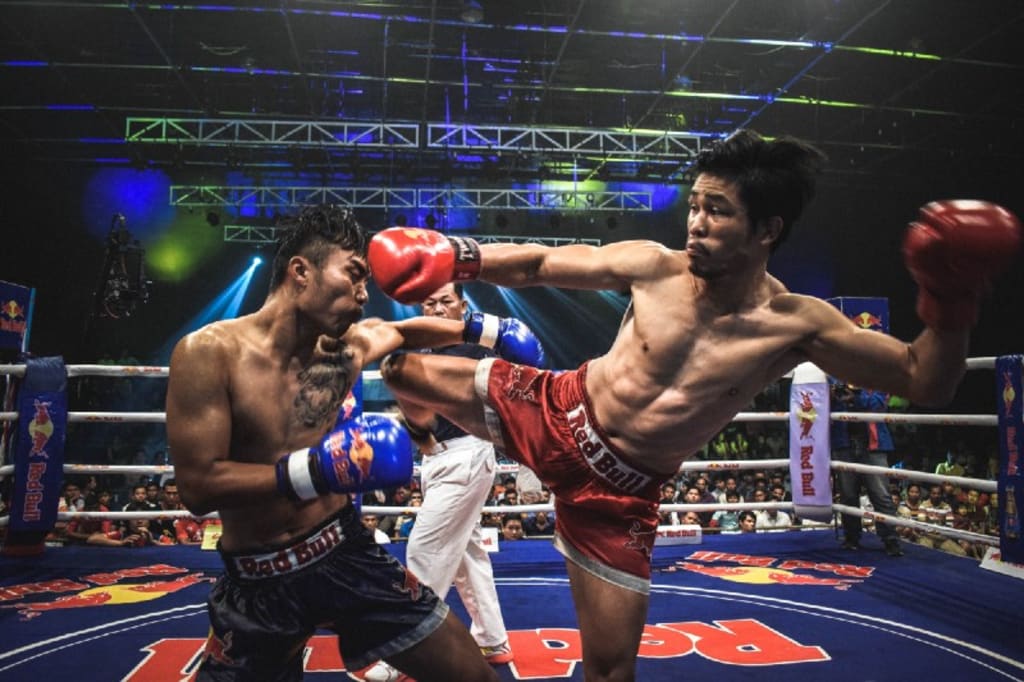How To Write Gripping Action Scenes - Scene Change
In the first part about writing gripping action scenes, I talked about the zoom effect. Today I will show you how to combine several connected scenes of an event to create speed and dynamics.

An action scene can stand on its own or be part of a complex meta scene. In this article, I will discuss both types of action scenes.
Scene change in a complex meta scene
I speak of a complex meta-scene when a story has actions that are directly related to one another, taking place simultaneously in several areas. The emphasis is simultaneous.
So we are not dealing with a chronological sequence of scenes.
An example of a complex meta scene can be found in the film White House Down with Channing Tatum, Jamie Foxx, and Maggie Gyllenhaal.
While the main character John Cale is trying to free his daughter from the clutches of terrorist leader Martin Walker inside the terrorist-occupied White House, preparations for an airstrike on the White House are underway at the same time.
The viewer alternately sees battle scenes from the squatting White House and views from the military situation center and the cockpits of the attacking bombers.
They all happen here at the same time, and everything comes down to one final point: Will the White House be destroyed with Cale and his daughter inside, or will Cale succeed in freeing his daughter and escaping the deadly danger?
The constant change of scenes within the complex meta-scene raises the tension even higher. The viewer is the only one who has the overall view in this confusing situation and wants to warn both Cale and the military commanders continually.
The power of this method lies in the fact that the viewer, or in the case of a book, the reader, can experience an event from different perspectives, giving him an information advantage over the acting persons.
This information advantage does not leave the viewer/reader cold, because, unlike the protagonists, he sees the dangers that arise from the fact that the persons acting do not have the same information.
The presentation of simultaneity adds an additional tempo element to the story. Unlike scenes that take place one after the other, here one minute can stretch to eternity so that much more can take place in the narrated time than in chronological narration.
I can narrate the same minute from any number of perspectives in any number of places, one after the other. The more often I jump from one scene to another within the meta-scene, the more breathless I can make the narrative tempo.
Changing scenes by changing perspectives in asingle scene
Not every action scene is part of a complex meta scene. The vast majority of scenes are told chronologically from beginning to end in a single location.
Usually, we choose a perspective character for each scene. We do this because it is confusing for the reader if we change the narrative perspective at will within a scene.
For us writers, however, it can be tempting to do just that. Fortunately, there is a simple trick to prevent the reader from losing his or her bearings.
I will demonstrate this with a short example.
Simon kicked in the door and stormed into the surgery room with his gun drawn. Sophie followed him but kept a few steps behind him.
"Drop the scalpel, you asshole," shouted Simon at Doctor Baker and pointed the gun at the head of the crazed surgeon.
The little ten-year-old girl Jane lay intubated and anesthetized on the operating table in front of him. Simon saw no blood. They had arrived just in time to prevent the illegal removal of organs.
If they had, he would have blown a bullet into that bastard's thick skull right then and there.
"I told you to drop the knife," growled Simon, when the doctor did not react immediately.
"All right, all right, relax," said Baker, shaking his head in amusement. "Look, I'm putting the knife down on the table.
Simon watched Baker suspiciously as he put the scalpel away and then slowly stepped back from the table. Simon kept him in his sights. Only when Baker was a good two meters away from Jane did Simon lower his weapon and hurry to the little girl.
"Sophie, keep an eye on this guy," he shouted to his wife, then turned to the girl. He had to find out how to get her free of all those tubes without killing her in the process.
"Hey, little one, everything will be okay now," he whispered to her and stroked gently over her head.
***
Sophie wished at that moment that Simon had given her a weapon as well. As her husband bent over little Jane, Baker suddenly looked straight over at her and grinned impudently.
She got goosebumps as she looked into those eyes. There stood, not 20 feet away from her, a monster in human form. He had kidnapped and disemboweled six children and then disposed of their bodies like slaughter cattle carcasses.
Why the hell is he still smiling? He was unarmed and cornered. He was facing life in prison or the insane asylum. Then why didn't he seem worried at all?
"Everything will be all right," she heard Simon say to the little girl, reassuringly. He turned his back on Baker. If the surgeon were armed, he could have taken advantage of the situation and overpowered Simon, Sophie thought. But luckily, his scalpel was lying next to Simon on the operating table.
Sophie did not trust the guy. He wouldn't be so cheerful if he didn't have some ace up his sleeve. Meanwhile, Simon had put his pistol down next to him and was examining the respirator.
Doctor Baker saw that, too. He looked at Sophie again and winked conspiratorially at her. At that moment, she saw something flashing in his right hand. Baker had had a second scalpel in his belt, which he now pulled.
Sophie did not think for a second and rushed towards the operating table. At the same moment, Baker also started moving with lightning speed.
He was two steps closer to Simon than she was. Sophie could not possibly manage to grab Simon's weapon before Baker was with Simon and Jane with the scalpel.
"Simon, watch out," she screamed in panic, then stumbled over her own feet. She hit the floor with her face. At the same moment, a shot rang out across the room like a thunderclap.
Sophie looked up and saw Baker collapse. Simon stood just half a meter in front of him, holding his pistol in his hand.
"You thought so, you asshole," growled Simon at the dying surgeon.
The doctor groped with his last strength for the scalpel that had fallen to the ground. When he got hold of it, Simon reloaded the pistol and shot him in the back of the head from above.
Sophie swallowed. She would never get used to seeing her husband do such things.
I've just written this little scene. It's probably not very well done technically, but that's not what mattered now. It was only meant to show how a scene can be broken down into small sub-scenes by changing the perspective.
The three asterisks signal the reader that something else is coming. I use this technique in all my books to separate different narrative perspectives within a scene.
In this way, we can realize changes of perspective within a scene, which gives us, so to speak, a change of scene within a scene.
As with scene changes in complex meta-scenes, we have again created a higher dynamic by looking at the same event from different perspectives.
Here, however, everything takes place in a single setting. Moreover, there is only a short moment of simultaneity here. As soon as Simon has promised the little girl that everything will be all right, the simultaneity ends, and the chronological time now progresses from Sophie's perspective.
Conclusion
Scene changes can be used in different ways to increase the pace and tension in an action scene.
The connecting element in the two types of scene change discussed here is that it is always associated with the shift in perspective character.
As soon as another scene begins, another character takes over. Both in the complex meta-scene and a single scene, this change of perspective ensures that the reader experiences the story on several levels.
Besides tension and tempo, we add depth to the scene.
I hope you were able to take some ideas for your work from today's article. Comments and feedback would be very welcome.
About the Creator
René Junge
Thriller-author from Hamburg, Germany. Sold over 200.000 E-Books. get informed about new articles: http://bit.ly/ReneJunge






Comments
There are no comments for this story
Be the first to respond and start the conversation.